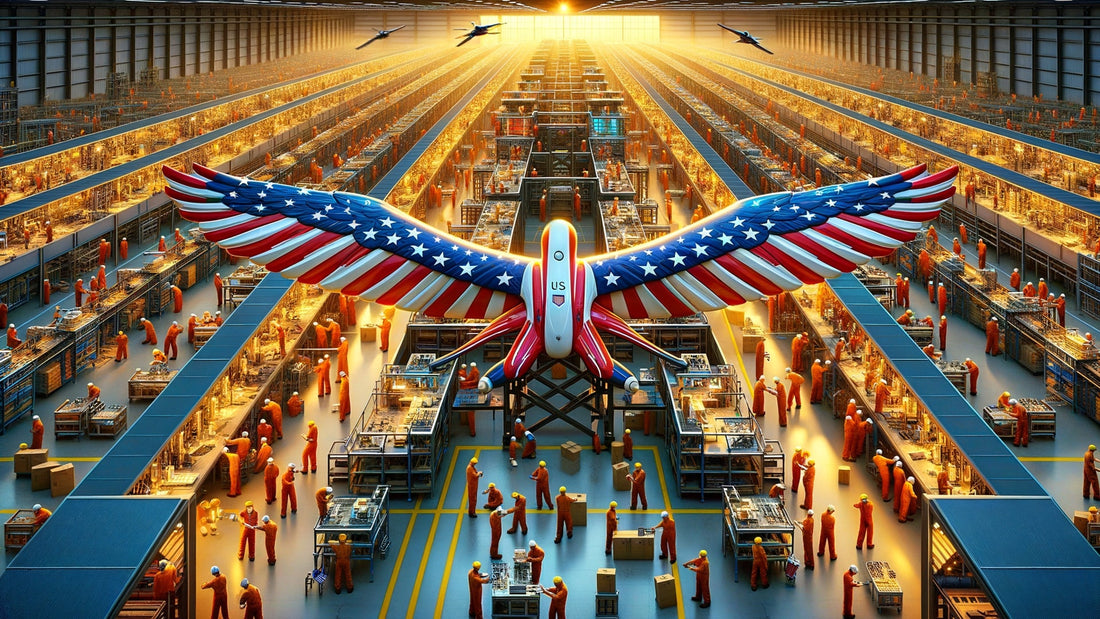
🇺🇸 The Push for U.S.-Made Drones: Reclaiming the Skies Through Domestic Innovation
Share
As the global drone market continues to soar—projected to surpass $90 billion by the end of the decade—the United States is making an urgent and strategic pivot toward domestic drone manufacturing. This shift isn’t just about economic competitiveness—it’s about national security, technological independence, and creating a resilient supply chain that doesn’t rely on adversarial nations.
For years, Chinese manufacturers, led by DJI, have dominated the consumer and enterprise drone sectors, offering sophisticated platforms at unbeatable prices due to government subsidies and vertically integrated supply chains. But with growing geopolitical tensions and mounting cybersecurity concerns, U.S. lawmakers, defense officials, and industry leaders are sounding the alarm—and taking action.
In mid-2025, the U.S. Department of Defense, under the directive of Defense Secretary Pete Hegseth, moved to dismantle bureaucratic obstacles that slowed down the adoption of domestically made drones. The Pentagon's expansion of the “Blue UAS” list now allows for broader battlefield use and streamlined procurement of American-built systems. This policy shift was followed by a surge in support for U.S.-based drone makers, with stocks of companies like AeroVironment and Kratos rallying on the news.
The federal government has also signaled its commitment to reshoring drone production through executive orders that limit the use of Chinese drones in government operations, encourage federal agencies to purchase American systems, and expedite FAA regulatory reform for beyond-visual-line-of-sight (BVLOS) operations. These efforts are being reinforced at the state level: Ohio recently approved a $310 million incentive package to build a 5 million square-foot drone manufacturing facility led by defense contractor Anduril Industries, creating over 4,000 high-tech jobs in the process.
On the innovation front, a new generation of U.S. drone startups is emerging, fueled by defense contracts, private capital, and a sense of patriotic urgency. Companies like Performance Drone Works (PDW)—which evolved from the world of drone racing—are producing advanced quadcopters for military use with extended flight times, modular payloads, and fully American-made components. Meanwhile, Skydio, a pioneer in AI-driven autonomous drones, continues to expand its enterprise and public safety offerings after exiting the consumer market to focus on scalable, secure applications.
Despite the progress, challenges remain. U.S. manufacturers face higher costs, limited supply chains for key components like rare-earth magnets and sensors, and the need for standardization across drone platforms. However, with growing bipartisan support in Congress—evidenced by the proposed “Drones for America Act”—there’s a roadmap for tackling these hurdles through tariffs on Chinese imports, investment in domestic component manufacturing, and guaranteed federal procurement contracts.
What’s clear is this: the U.S. is no longer content to play catch-up. The convergence of public policy, private innovation, and geopolitical necessity is laying the foundation for a new era of American drone leadership. From battlefield reconnaissance to commercial mapping, public safety, agriculture, and cinematography, the future of flight is being reshaped—not just by technology, but by the conviction to bring it home.
